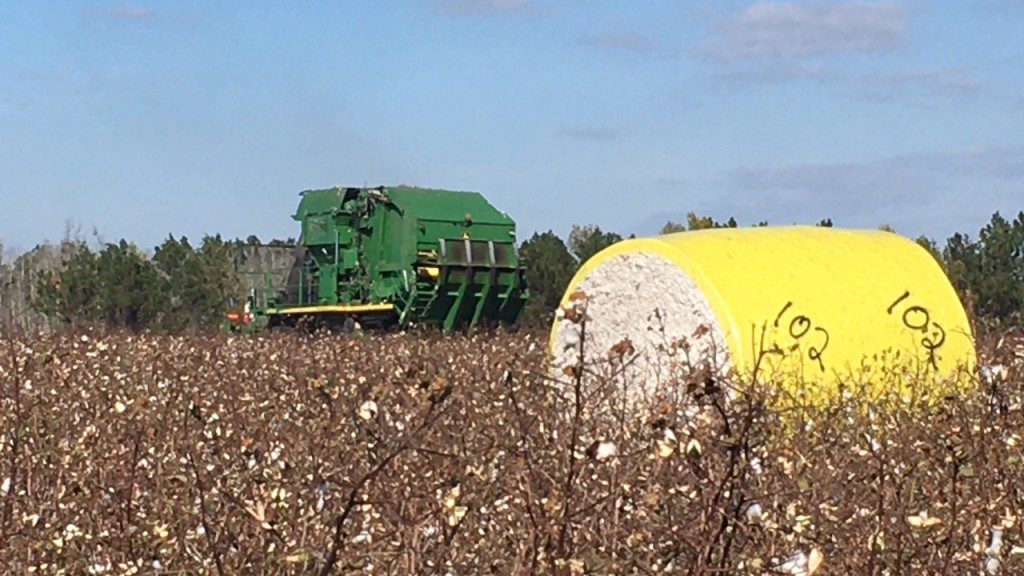Recent Posts
-
I have been noticing various levels of bermudagrass stem maggot damage in area bermudagrass fields. It is suggest to closely monitoring the current regrowth of bermudagrass for damage. It is usually late in the second cutting or early in the third cutting when damaging levels first begin to appear. Spraying an insecticide as a preventative/prophylactic application…
Posted in: Hay & Forages -
I have been receiving a few calls about PGR use on cotton. Factors that must be considered when determining when and how much mepiquat to use include:(1) stage of plant growth, (2) rate of plant growth, (3) pest control and (4) anticipated plantgrowth (irrigation, drought, fertility). Because of the many variables, hard and fast rules…
Posted in: Cotton -
I have been getting calls and questions about sugar cane aphids in grain sorghum. Below are some thoughts from Dr. David Buntin, UGA Entomologist, about sugar cane management in grain sorghum. Treat when aphids reach threshold levels. Several threshold levels are being used in the Delta region for 2015. One conservative threshold is 25% infested…
-
Row Crop Disease Management Meeting: There will be a row crop management disease management meeting at the Colquitt County Extension office on June 18th at noon. Dr. Bob Kemerait, UGA Plant Pathologist, will be hand to give growers an update on peanut soileborne programs, southern rust management in corn, and other row crop disease issues. …
-
Many of you may have noticed pecan trees with wart-like galls on the leaves. This is the result of feeding by an aphid-like insect called phylloxera, which causes rapid and abnormal growth of young leaf tissue to surround and enclose the female (called a stem mother). Based on the calls I’ve had and observations in the…
Posted in: Pecans -
This year’s El Nino is particularly weird according to University of Georgia Climatologist Pam Knox. Typically, El Nino starts around late December, but this time around it did not start until about March. Because of that, subtropical jet streams have shifted over Texas and Oklahoma during their planting season, causing those area to receive an…
Posted in: weather -
Building on the success of the first 10 years of the Southeastern Hay Contest, we are excited to announce a MAJOR EXPANSION of this contest! Massey Ferguson has joined us as the title sponsor for the SE Hay Contest! They will be providing the Grand Prize of a new Massey Ferguson RK Series rotary rake…
Posted in: Hay & Forages -
Young pecan trees require two key ingredients for establishment; 1) water and 2) elimination of weed competition. There is no published data on required irrigation amounts for young pecan trees that I have been able to find. So, we began a study in 2014 to determine this for trees grown under Southeastern U.S. conditions. Looking at trees in…
Posted in: Pecans -
Below are a few words from Mark Abney, UGA Peanut Entomologist, on threecornered alfalfa hoppers and potato leafhopper. Threecornered alfalfa hopper (TCAH) is commonly seen in Georgia peanut fields each year. This insect is highly mobile as an adult, and large numbers can very quickly move into and out of a field. The adults are…
Posted in: Uncategorized -
At-cracking sprays are an effective tool in managing weeds in peanuts. New pre-plant incorporate (PPI) or pre emergence (PRE) herbicides provide an excellent residual barrier in a weed program. But many fields will need an at-cracking herbicide(s). Consider the following tips when making at-crack applications with paraquat in peanuts: **If the main weed problems are…
Posted in: Peanuts
